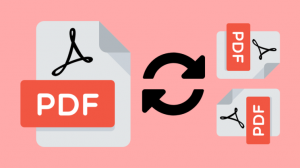As a web designer, you probably think about web design with a focus on codes, wireframes, and content management. But did you know that web design is not just about integrating social media buttons or polished visuals? It’s more about following a certain website creation process that’s aligned with an all-inclusive strategy. After all, websites ought to offer so much more than just aesthetics!
Every element of your site has to work towards your goal, and your goal is to attract visitors and help them understand your brand. But how do you achieve that?
Let’s take a look at the steps involved in the web design process from White Peak Digital.
Project definition
The first step in the web design process is identifying the reasons behind your website’s existence. What is it supposed to achieve? What are its goals and objectives? When the goals and objectives of your website are clear to you, it becomes easier to make informed decisions when it comes to your site structure, navigation, and visual design of your site. This first step is crucial because it lets you identify the measurable key outcomes directly related to your strategic goals.
Project scope
Once you have already defined your project, the next step is to define its scope. When you create a well-defined project scope plan outlining specific activities, deliverables, and timelines, it becomes easier to set clear expectations for your clients. But how do you do this? Well, one of the most common ways is through the use of a Gantt chart, which does not only outline major activities but also the tasks associated with each activity.
Site architecture
Site architecture basically includes your sitemap and the wireframes of your pages. This step is so important because without the sitemap, there is no way to determine if you’ve considered all the key pages in your website, as well as the relationship of each page with one another. It is also in this step that you define how you are going to structure your site’s overall navigation. But what about wireframes? Well, they provide a guide for defining the content hierarchy on every page, although they don’t show any actual design elements.
Visual design
So you’re done planning your site structure and wireframes—what’s the next step? Once you’re done with the blueprint of your site, it’s time to create a visual style, which will most likely be determined by your organization’s visual brand. When it comes to this step, your goal should be to make sure that the overall visual design of your site conveys your key brand perceptual ideas website design company San Francisco.
Site development
Let’s say the designs are already approved. Now it’s time to flesh out the design of your web pages! You can begin with developing new content and refining old content, as well as creating videos, slideshows, podcasts, and other media that you want to appear on your website. Part of this step in the web design process is also building out the HTML and CSS of your website.
Site testing
Between developing your site and getting it ready for launch is the site testing, during which you will place your site on a production server where only internal audiences can view it and review it on multiple browsers to see if it has broken design elements. Why do you need this step? Because you don’t want your website to encounter issues when it launches. You need to address these issues before your website goes live! You know, nothing destroys a brand more than a dysfunctional website.
Launch
After you’ve tested your website and had it reviewed on multiple browsers, you’re ready to launch! Once you get to this point, be ready to address any feedback users may have as they adapt to your new website. Remember, just because you’ve subjected your website to intense scrutiny and testing doesn’t mean you won’t encounter any issues upon launch, so be prepared to make some immediate changes just in case.






